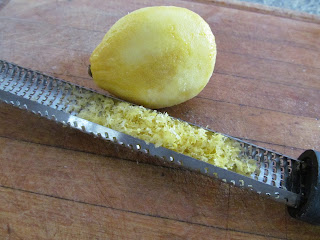
I hate to be a complete killjoy, but for the second month in a row, I haven't liked the cookbook selected for the
Cook The Books challenge. I'm so bummed because I really, really, really wanted to like this month's cook book, which was
Good Fish: Sustainable Seafood Recipes from the Pacific Coast
by Becky Selengut. First, it is beautifully photographed. Second, I loved her storytelling, especially when she wrote about working in a galley of a boat headed to Alaska. How cool is that? I also really like her
how to videos
on her website that show you how to do just about anything with seafood, from devein a shrimp to fillet a fish I adored everything she wrote about eating fish from the Pacific Northwest seasonally and sustainably. Living in the Great Lakes region, I can see that there really needs to be a book written just like this one, but featuring our local catch.
I come from a long line of fishermen and women. I grew up fishing my whole life because I lived within 10 miles of Lake St. Clair, the lake that borders Lake Huron and the Detroit River. My first fishing rod was a bamboo number without a reel and a big red and white bobber on the line. My uncle had a fishing boat and we went fishing many weekends in the summer when I was a kid; I can still remember going out to the golf course late at night with a red filter on my flashlight to pick night crawlers to use for bait. I went to college on the shores of Lake Superior, where I took bait and fly casting for P.E. credit. I have very fond memories of buying lake trout right on the Superior shore from a fisherman and stuffing it with herbs and grilling it. We went
smelt dipping in the spring when the tiny fish venture upstream to spawn. Currently, we live on a small lake where we can catch pan fish anytime we want. We live within walking distance of the Huron River, and my son is an avid fly fisherman who can't wait to get out there and "match the hatch" this season. So I was thrilled to try my hand with some of these recipes - especially this month, since I am Catholic and so we don't eat meat of Fridays during Lent.
I didn't get very far, because my very first attempt was such a dismal failure, I lost my enthusiasm. To be fair, my family isn't very adventurous when eating seafood. Their favorite way to eat it is pan fried with
Drake's Fry Mix (another local Michigan taste treat). So maybe I shouldn't have picked roasted black cod with bok choy and soy caramel sauce, it might have been too ambitious for their taste. But it looked so delicious in the picture - and I have had soy caramel sauce at a favorite Vietnamese restaurant before, so I thought it would be an excellent choice. However, it wasn't very good at all. I think the problem might be that it called for 2 large bulbs of bok choy, which is an awful lot of the stuff The recipe would be better served if it used baby bok choy instead, because the large bulbs didn't really roast at all; instead they steamed themselves into a slimy pile. As a result, the vegetable mixture of the bok choy, cabbage, tomatoes and green onions seasoned with a little sesame oil and rice wine vinegar came out watery and bland - the serrano chile got lost in it. And there really wasn't enough soy caramel sauce to add any significant flavor to the dish. My teenage son, who eats everything that isn't nailed down, left more than half of his plate uneaten and he didn't touch the vegetables. My husband, who good naturedly tries everything I cook and tries to say something nice about it (even if it isn't his favorite) summed it up in one word, "Yuck". Sad to say it, but I had to agree with him. Even I didn't finish mine - and I love bok choy and cabbage! I knew better than to make fish for my seafood hating daughter; hers was made with chicken instead, which we all were eyeing enviously. Perhaps the dish would have been more flavorful if the fish was marinated in soy sauce and sesame oil. I'm not sure...
So the cookbook sat forlornly on my table for a few weeks - I poked around looking for something else I could try but nothing jumped out at me. Maybe I should have tried some of the shrimp recipes - after all, they are farming shrimp in tanks now up near Lansing. Or I could have tried some of the halibut recipes with Lake Superior whitefish instead. Or I could have sent my son down to the lake with his tip ups and his auger and had him pull some bass out of the ice on our lake and tried my hand the fish taco recipe. But I just lost my gumption, and the book is going back to the library tomorrow. I finished up my Lent instead with my favorite fish taco recipe and some tuna casserole instead. But the idea of a Great Lakes seafood cookbook intrigues me; maybe the best think I got from this book is an inspiration.








